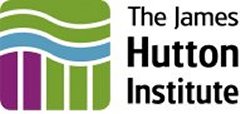FEARLUS Models
FEARLUS models are written in the Swarm agent-based modelling system. Versions of current interest are FEARLUS0-3 and FEARLUS0-5.
We expect to continue experimental work with version 0.5 for at least another year, focusing on continued work on imitation, aspiration and memory, on different ways of representing space and neighbourhood, and possibly on long-term directional change in the biophysical and economic environment. Meanwhile, we will also be designing and building FEARLUS version 1.0.
Version 1.0 is being designed as an agent-based modelling system, rather than a single model. Its design will draw on our experience with our existing models, and on an extensive literature review. It is intended to allow us to construct and experiment with models of land use change, of varying degrees of complexity and abstraction, rapidly and flexibly. Like the earlier FEARLUS models it will be built using Swarm, but will be written using Swarm's new Java interface.
As well as allowing us to extend our work on imitation, aspiration and memory in spatially and temporally heterogeneous environments, it is intended that version 1.0 should facilitate the study of a range of phenomena including technical innovation and directional change in the environment, common pool resource dilemmas in land use and related areas, and the emergence and influence of norms, institutions and organizations.
Early foci of design work will include: the ability to represent the direct effects of land use practices on neighbouring land parcels, the feedback effect of land uses on the biophysical properties of the land, the representation of bodies of water and water flow, more flexible and sophisticated representation of land managers' strategies for land use selection, and the introduction of land manager strategies for land parcel acquisition and sale.
We think it likely that in most cases, specific land use change models will not use all the facilities version 1.0 will make available; our general preference is to try to capture the key processes in a given range of situations in models that remain as simple as possible. However, the capability to build more complex and realistic models of specific places over specifc time periods (past or future) is also a design goal.

